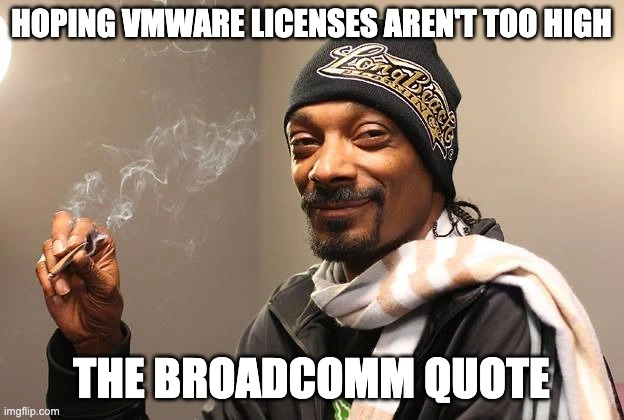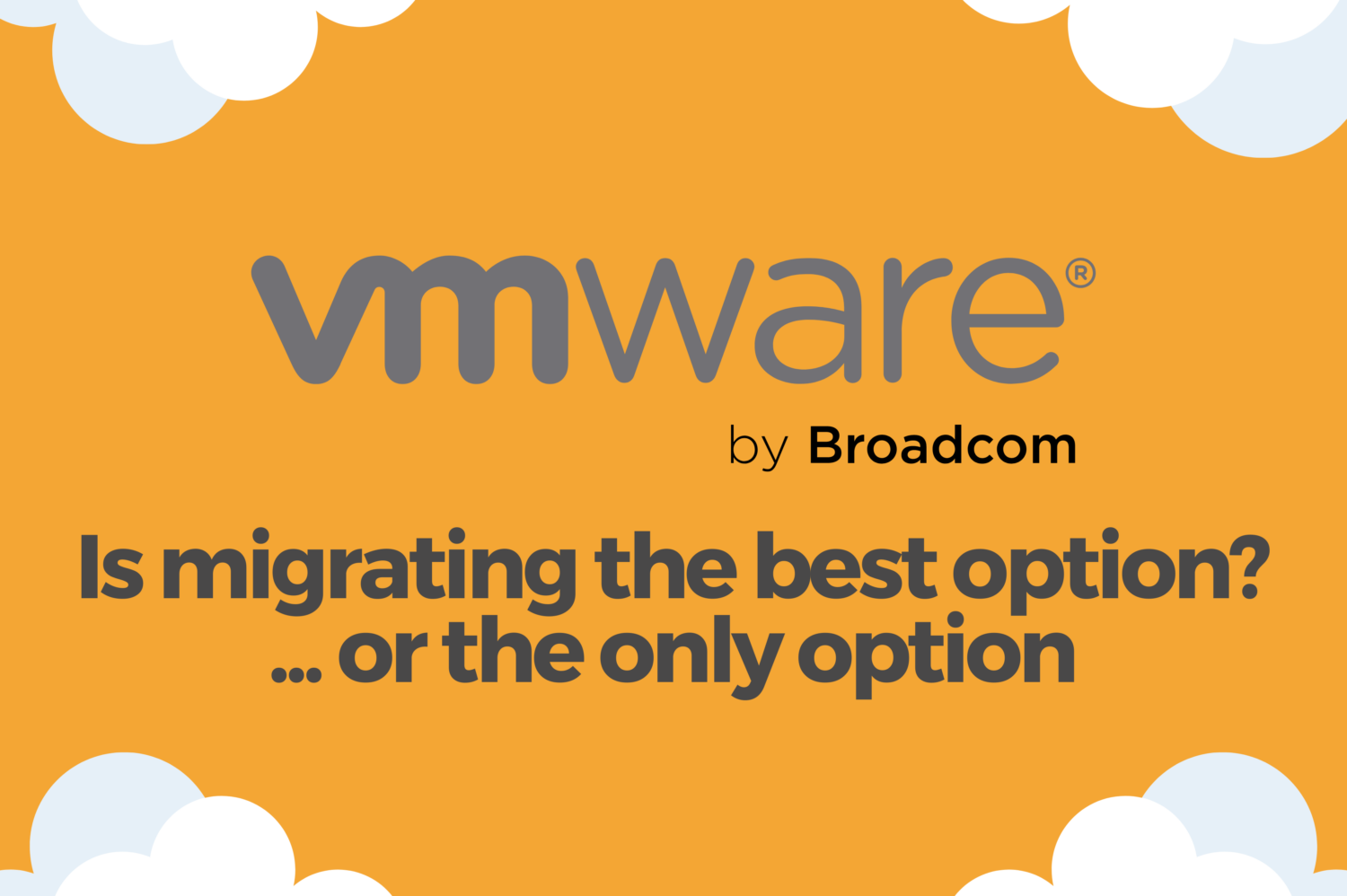Navigating the Latest Changes in Broadcom VMware's Licensing Model
In December 2023, Broadcom VMware introduced significant changes to its licensing model, transitioning from perpetual licensing to a subscription-based structure.
The strategic move to simplify its product lineup has resulted in significant alterations in how customers procure and employ VMware products, which has sparked conversations and considerations among numerous users and stakeholders. Many VMware clients are outraged, and rightfully so. The sudden change disrupts their operations, strains budgets, and erodes trust in VMware’s commitment to their needs.
Let’s explore these latest changes to provide clarity and guidance for organizations navigating the Broadcom VMware ecosystem.
Understanding the Context
Back in 2019 Broadcom acquired another business – Symantec Enterprise Security which encompassed the purchase of various software assets, including the Symantec Enterprise Security Suite. This marks one of the largest technology transactions in history including VMware technology licenses previously bundled with Symantec products. As a result, Broadcom VMware inherited a diverse customer base and licensing framework, necessitating strategic adjustments to align with evolving market demands and business objectives.
Key Changes in the Licensing Model
Immediately after the recently completed $69 billion acquisition, Broadcom implemented substantial changes to the licensing model. One of the pivotal changes being the transition to a subscription-based licensing. Previously, customers were able to purchase conventional perpetual licenses and this transition indicates a notable change in how businesses acquire and utilize VMware solutions.
Moreover, customers with existing perpetual licenses are unable to transition or exchange them for the new subscription model!
Simply put, imagine you’ve been renting an apartment for several years. You’ve grown accustomed to the stability and affordability of your rental agreement, have made changes and renovations to the apartment to adapt it to your needs and this has allowed you to budget and plan your expenses accordingly. However, one day, your landlord informs you that they’re changing the terms of your lease, increasing the price significantly.
All of the sudden you are trapped in a situation where you’re left with no choice but to accept the new terms or face the prospect of finding a new place to live in an already competitive and expensive housing market.
The same way a renter of this apartment might feel frustrated and constrained by their landlord’s decision, clients affected by VMware’s licensing shift may also experience similar sentiments. The bigger the infrastructure, the larger the costs to either stay or migrate.

Implications and Considerations
According to the announcement, many VMware software solutions resulting from this portfolio simplification will exclusively be available as part of VMware Cloud Foundation (VCF) or VMware vSphere Foundation (VVF). They would not be available for purchase as standalone point solutions anymore.
VMware stated that the portfolio simplification would enable customers to extract more value from their VMware investment as well as enable VMware to accelerate the delivery of new innovations and ease both deployment and management for customers.
However, the licensing and subscription model alterations introduced by Broadcom VMware carry substantial financial and operational ramifications for businesses. Companies are faced with making a choice between paying more or migrating away and most of the users need adjustments to budgeting and procurement processes, as well as considerations regarding long-term cost implications and ROI analysis.
Businesses with active perpetual licenses can continue to use these, but transitioning to a subscription model will be necessary to receive continued support once the contract expires. Although Trade-in Incentives for existing customers are being offered, businesses must meticulously assess their current VMware usage and contracts to effectively navigate these changes.
Here is a high-level overview of the implications of these changes:
- Perpetual License Sales Discontinued
Customers are no longer able to purchase perpetual licenses and will need to buy into subscriptions. - Transition to Subscriptions
This shift is poised to boost Broadcom’s revenue, with the company aiming to almost double its revenue from $4.7 billion to $8.5 billion within three years. - Subscription Purchasing Timing
Anticipate heightened audits from VMware; if additional licenses are suddenly required, the subscription model will be the sole option. - Support Contract Expiry
VMware is likely to be aware of your current support contract expiration date and may reach out to discuss transitioning to a pricier contract model. - Replacement Products
Customers will have to seek clarity on which products will replace their existing VMware licenses.

What are the alternatives?
When considering migrating away from VMware, it’s essential to evaluate alternatives that suit your specific requirements in terms of functionality, scalability, cost-effectiveness, and ease of migration.
Here are some of the well-known alternatives to VMware:
Containerization with Docker and Kubernetes


Instead of traditional virtualization, containerization technologies like Docker and Kubernetes offer a lightweight and portable alternative for deploying and managing applications. Containers provide isolation at the application level and can be more efficient than virtual machines for certain workloads, but for the best efficiency requires the payload to be Cloud Native.
OpenStack

OpenStack is a well-established open-source cloud computing platform that offers virtualization supporting multiple hypervisors including KVM, XEN, Hyper-V, Virtuozzo and more. Its flexibility and both IaaS and PaaS capabilities make it suitable for building private and public clouds of large and small scales with strong network isolation and state of the art technologies.
Apache CloudStack

Apache CloudStack is an open-source cloud computing platform that provides Infrastructure-as-a-Service (IaaS) solutions. It presents a compelling alternative to VMware for virtualization and cloud management for organizations seeking an open-source, scalable, and flexible cloud computing platform.
c12n Private Cloud Solution

Looking for a modern, vendor-neutral alternative to VMware that’s enterprise-ready? Check c12n.
Developed by Cloudification, c12n is a private cloud platform built on OpenStack, Kubernetes, and Ceph. It offers full control over your infrastructure: no proprietary lock-in, no license fees – making it a future-proof VMware replacement.
c12n delivers a pre-integrated solution for IaaS/PaaS use cases like VMs, containers, SDN, and all kinds of storage.
You get:
- Full IaaS features for VMs, virtual networks, containers, and Kubernetes
- Multi-tenancy with strong network isolation
- Integrated end-to-end monitoring and alerting
- Optimized Ceph-based storage and local storage options
- Optionally: premium 24/7 support from our own specialists
c12n helps you break free from Broadcom’s restrictive licensing model—without the complexity of DIY OpenStack.
Conclusion
The shift away from perpetual licenses to subscriptions in Broadcom VMware’s licensing model will undoubtedly impact its customers, including changes in cost structures, license management practices, and vendor relationships.
Considering aggressive changes by Broadcom and all the aforementioned arguments, we can argue that migrating away from VMware platform is the best option for affected clients in the long term. Of course, it is crucial to assess your organization’s specific needs, existing infrastructure, and future strategy. As well as consider factors such as vendor support, ecosystem compatibility, and migration complexity when evaluating alternatives to VMware.
It’s essential for organizations to proactively assess the impact of these changes and adapt their software procurement strategies to cost-effective and flexible alternatives that prioritize client needs over corporate greed and at the same time ensure continued compliance, value, and alignment with business objectives.
At Cloudification, we specialize in open source infrastructure built on OpenStack and Kubernetes. Our fully open source c12n private cloud solution gives you the freedom to scale without vendor lock-in and the power to regain control over your infrastructure and costs.
If you’re affected by VMware’s new pricing and are considering a future-proof alternative, let’s talk – we’re here to help you transition to a modern, open, and sovereign cloud environment.

